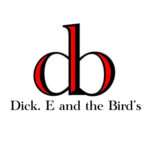The Spark 40 amplifier from Positive Grid has carved out a significant niche in the realm of practice amps, and for good reason. This compact combo packs a surprising amount of versatility and features, making it an excellent tool for guitarists of all levels seeking a convenient and inspiring practice solution. Let’s delve into what makes the Spark 40 a compelling option for your guitar playing needs.
Physically, the Spark 40 is designed with portability in mind. Weighing in at a mere 11.5 pounds and with dimensions of approximately 14 inches in length, 7 inches in height, and 7 ½ inches in depth, it’s easily transportable for practice sessions anywhere you go. It’s available in both Pearl White tolex and the standard black finish, allowing for a touch of personal style. The top-mounted controls are intuitively laid out, providing quick access to all essential parameters.
The control panel features a standard ¼” instrument input and a ⅛” headphone output for silent practice. A simple on/off switch and a dedicated music volume control are also present. The core tone shaping is managed by a series of clearly labeled knobs: Amp Type selector, Gain, Bass, Middle, Treble, and Master Volume. Beyond basic tone, the Spark 40 offers a wealth of built-in effects, with dedicated knobs for Modulation, Delay, and Reverb. Four preset selector buttons allow for quick switching between your favorite sounds, and a multi-function button serves as both a tuner and tap tempo control.
Around the back of the unit, you’ll find the power connector for the included power adapter, which conveniently supports a wide voltage range from 110v to 240v, making it suitable for international use. A bi-directional USB Type A port opens up connectivity for recording and interfacing with your computer. An ⅛” auxiliary input allows you to connect external music sources like smartphones or media players for jamming along with your favorite tracks. An LED indicator signals when the unit is functioning as a Bluetooth speaker.
Under the hood, the Spark 40 boasts a frequency response of 20Hz-20KHz, delivering a broad sonic spectrum. It provides stereo output at up to 116dB at 1 meter, powered by a 40-watt Class D amplifier driving a pair of 4” speakers in a bass reflex cabinet design. Despite the compact speaker size, the amp manages to produce a surprisingly full sound, even when used with bass guitars, suggesting some level of digital signal processing is at play to enhance the low-end response. The 4-ohm total impedance points to an efficient system that can achieve considerable volume even at lower power levels.
One of the standout features of the Spark 40 is its extensive library of amp simulations and effects. Out of the box, it includes 30 amp models, and Positive Grid offers additional amp packs for download. The built-in effects section is equally comprehensive, offering 40 different effects spanning Noise Gate, Compressor, Overdrive/Distortion/Fuzz, Modulation, Delay, and Reverb categories. While expansion packs like the Jimi Hendrix option (which adds Wah, amps, Vibe, and fuzz effects) are available, it’s worth noting that there’s no dedicated expression pedal input, which might limit real-time Wah control for some users.
Included in the packaging are the Spark 40 unit itself, the power adapter, a USB cable, a quick start guide, and a license for Presonus Studio One DAW software. While the bundled software may vary (originally Studio One Prime, potentially now a promo for Artist version), the inclusion of a DAW is a valuable addition for recording and production. Studio One is a capable DAW, particularly well-suited for Windows users, although Mac users might already be comfortable with GarageBand.
Positive Grid strongly encourages users to download the Spark App, available for both iOS and Android devices via their respective app stores. This app is integral to unlocking the full potential of the Spark 40, providing access to a vast library of tones, backing tracks, and smart features that significantly enhance the practice experience.
In terms of connectivity for recording, the Spark 40 can be directly connected to a computer via the included USB cable. While the original article noted potentially low input levels requiring a boost in a DAW like Logic Pro, the USB connection provides a convenient way to capture your playing and explore the amp’s tones in a recording environment. The sound quality through both the internal speakers and studio monitors is reported as being commendable, further highlighting the versatility of the Spark 40 as both a practice amp and a recording tool.
In conclusion, the Spark 40 stands out as a highly versatile and feature-rich practice amplifier. Its compact size, extensive amp and effects models, Bluetooth and USB connectivity, and included software make it a compelling option for guitarists seeking an all-in-one practice and recording solution. Whether you’re a beginner honing your skills or an experienced player looking for a convenient and inspiring practice tool, the Spark 40 is definitely worth considering.

